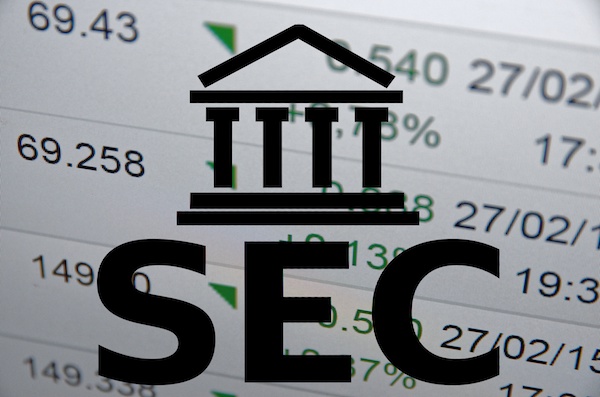One highly utilized exemption under the SEC is Regulation D. This blog addresses two aspects of Regulation D: Rules 506(b) and 506(c), both of which provide a federal preemption from state registration of the security and have no offering cap.
Rule 506(b) of Regulation D
Looking first at Rule 506(b) (“506(b)”), this exemption creates limitations on how the security can be sold. The main limitation is that the issuer is restricted from general solicitation/advertising. An issuer is only allowed to sell the security to investors if there is a “pre-existing, substantive relationship,” with a few exceptions that the SEC discusses in there Compliance and Disclosure Interpretations. See Questions and Answers of General Applicability, SEC.GOV, Question 256.27 (Nov. 6, 2017), https://www.sec.gov/divisions/corpfin/guidance/securitiesactrules-interps.htm. Yet, despite these exceptions, issuers relying on 506(b) should ensure a pre-existing, substantive relationship exists with its investors to avoid any connotation that there was general solicitation/advertising.
The SEC explains that for the purposes of negating general solicitation, “[a] ‘pre-existing’ relationship is one that the issuer has formed with an offeree prior to the commencement of the securities offering or, alternatively, that was established through either a registered broker-dealer or investment adviser prior to the registered broker-dealer or investment adviser participation in the offering.” Id. at Question 256.29. Additionally, the term substantive is defined as follows: “A ‘substantive’ relationship is one in which the issuer (or a person acting on its behalf) has sufficient information to evaluate, and does, in fact, evaluate, a prospective offeree’s financial circumstances and sophistication, in determining his or her status as an accredited or sophisticated investor. Self-certification alone (by checking a box) without any other knowledge of a person’s financial circumstances or sophistication is not sufficient to form a ‘substantive’ relationship.” Id. at Question 256.31.
Another important requirement of 506(b) is that the purchasers must be accredited investors, as that term is defined in Rule 501 of Regulation D. See § 230.501 Definitions and Terms used in Regulation D, ECFR.GOV (Feb. 7, 2018), https://www.ecfr.gov/cgi-bin/retrieveECFR?gp=&SID=8edfd12967d69c024485029d968ee737&r=SECTION&n=17y3.0.1.1.12.0.46.176. However, 506(b) does offer a de minimis exception that allows up to 35 non-accredited purchasers.
One of the benefits of 506(b) compared to 506(c) is that self-certification is allowed, which means the issuer is not obligated to go through the same heightened requirements of verifying an accredited investor as required under 506(c). Nevertheless, as explained under the definition for “substantive relationship,” 506(b) still calls for the issuer to have knowledge of a person’s financial circumstances or sophistication to form said relationship.
Rule 506(c) of Regulation D
To expand a company’s reach, the Jumpstart Our Business Startups Act, otherwise known as the JOBS Act (the “Act”), opened the door to general solicitation/advertising under Regulation D by creating Rule 506(c) (“506(c)”). This mandated change to Regulation D falls under Title II of the Act. While Title II expands issuers’ investment potential, an offering made under 506(c) must still only be to accredited investors. Unlike other options under the Act that may be open to all purchasers, utilizing 506(c) means the issuer is limited to selling only to accredited investors. To balance the availability for general solicitation/advertising, the Act created heightened requirements for verifying that the purchaser is an accredited investor. The issuer has the obligation to take “reasonable steps” to verify that those who invest meet the accredited investor definition. To ensure compliance, the SEC listed four non-exclusive verification methods that an issuer may use, including:
- verification based on income, by reviewing copies of any Internal Revenue Service form that reports income, such as Form W-2, Form 1099, Schedule K-1 of Form 1065, and a filed Form 1040;
- verification on net worth, by reviewing specific types of documentation dated within the prior three months, such as bank statements, brokerage statements, certificates of deposit, tax assessments and a credit report from at least one of the nationwide consumer reporting agencies, and obtaining a written representation from the investor;
- a written confirmation from a registered broker-dealer, an SEC-registered investment adviser, a licensed attorney or a certified public accountant stating that such person or entity has taken reasonable steps to verify that the purchaser is an accredited investor within the last three months and has determined that such purchaser is an accredited investor; and
- a method for verifying the accredited investor status of persons who had invested in the issuer’s Rule 506(b) offering as an accredited investor before September 23, 2013 and remain investors of the issuer.
Eliminating the Prohibition Against General Solicitation and General Advertising in Rule 506 and Rule 144A Offerings, SEC.GOV (Sept. 20, 2013), https://www.sec.gov/info/smallbus/secg/general-solicitation-small-entity-compliance-guide.htm.
In light of this heightened requirement to verify accredited investor status, issuers may choose to utilize 506(b) over 506(c). However, both rules have benefits and burdens. While 506(b) does not have the heightened, accredited investor verification requirement, it also prohibits general solicitation/advertising, and while 506(c) permits general solicitation/advertising, it places a heavier burden on the issuer to take “reasonable steps” to verify an accredited investor. Thus, when deciding which exemption to utilize, an issuer should determine which exemption best fits its intended goal in the sale of securities.
The attorneys at De Leon & Washburn, P.C. are available to assist clients and out-of-state counsel with business and securities law. For more information regarding the firm’s services, please visit our Practice Areas page, and please feel free to contact the attorneys at any time.
______________________________________________________________________________
© De Leon & Washburn, P.C. This article is provided for informational purposes only. It is not intended as legal advice nor does it create an attorney-client relationship between De Leon & Washburn, P.C. or its lawyers and any readers or recipients. Readers should consult an attorney of their own choosing to discuss how these matters relate to their individual circumstances. Articles are not continuously updated, so information may become out-of-date. Reproduction in whole or in part is prohibited without the express written consent of De Leon & Washburn, P.C.

